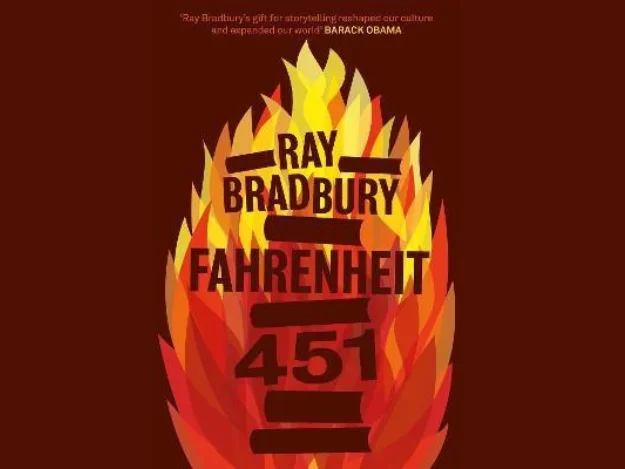
Fahrenheit 451: An Analytical Review
by Celia B
Ray Bradbury's Fahrenheit 451 is a powerful dystopian novel that warns against the danger of governmental overreach,censorship, and the erosion of individual thought.Through his use of literary devices such as symbolism, setting, and characterisation, Bradbury reveals how authoritarian regimes can manipulate citizens and suppress freedom.
One of the most significant tools Bradbury employs is symbolism, particularly the use of fire. Normally associated with warmth and comfort, fire in this novel is twisted into a tool of destruction. Bradbury twists the meaning of fire so it becomes a tool of manipulation and makes it a means of control. The firemen, who are ironically tasked with burning books and starting fires rather than putting them out, embody this irony.The novel opens with the line “It was a pleasure to burn,“ immediately setting a tone of disturbing normalisation toward censorship and violence.
Fire is symbolic of both control and rebellion.While the government uses it to destroy knowledge.Montag’s eventual rejection of this system and his turn toward the preservation of book reclaims fire as symbol of hope and resistance.This dual symbolism reflects the novel’s core tension between oppressive power and the human desire of freedom.
The setting of Fahrenheit 451 is a bleak, futuristic society where books are banned, and people are constantly bombarded with mindless entertainment. Bradbury uses this setting to critique the dangers of distractions and the loss of critical thinking. Society is filled with ‘parlor walls,’ giant, interactive TVs that keep citizens absorbed and docile. Public spaces are empty as no one talks or walks in them. The result is a populace that no longer questions authority.
Bradbury wrote, “If you don’t want a man to be unhappy politically, don't give him two sides to a question to worry him, give him one.” This quote, said by Captain Beatty, shows the regime's method of control, to eliminate complexity .The oppressive environment warns of a future in which technology, if unchecked, can be used to stop curiosity and force people to believe what the government thinks or says and for them not to fight back.
Bradbury’s use of characterisation is essential to the message. His characters represent various responses to authoritarian control. Guy Montag, the protagonist, begins as a loyal fireman, but evolves into a thinker who questions the system. His transformation begins when he meets Clarisse McClellan, a curious young woman who asks him, “ Are you happy?” - a seemingly simple question that disrupts his worldview and sparkles his journey toward self doubt and discovery.
Clariss symbolises free thought and individuality, while Captain Beatty embodies manipulative authority.Beatty uses his knowledge of literature to enforce conformity: “A book is a loaded gun in the house next door. Burn it, take the shot from the weapon.” His metaphor reveals the regime's fear of ideas and its brutal efforts to suppress them. Characters like Montag, Clarisse, and Beatty illustrate the internal and external battles over truth and autonomy. Montag’s eventual rebellion highlights the resilience of human spirit, even in the face of immense pressure to conform
Bradbury's Fahrenheit 451 remains relevant today .Through symbolism, setting and characterisation, the novel exposes how governments can suppress freedom through censorship, distraction and propaganda. As modern society fights with the influence of media, Bradbury’s novel is a warning and an invitation for us to think more critically .